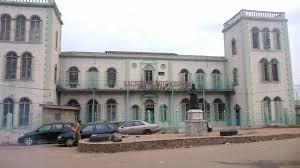Before the Health tech revolution began in Africa, before AI tools, solar powered clinics, telemedicine and chatbots, were missionary hospitals.
The thing is, these hospitals did not have high tech machines. But what they brought to the most remote communities was revolutionary.
.jpg)
Today, their influence can still be seen, not just in old hospital buildings but in the way we think about community healthcare, access, and innovation.
And so today, we explore how missionary hospitals not only structured healthcare in Africa but also greatly contributed in shaping today’s innovations in public health, community care, and health technology.
Missionary Hospital and Why were they Built in Africa?
A missionary hospital is a healthcare facility built by religious people, mostly Christians, to help sick people , especially in places where there are not many doctors or hospitals.
Missionary hospitals started in the late 19th century as a faith-driven effort to both evangelize and serve communities.
In Abeokuta, Nigeria, the Sacred Heart Hospital, founded in 1895 by the Catholic mission, was the first modern hospital in the country

By 1960, mission hospitals operated 118 beds, compared to 101 government hospital beds,as such,accounting for around 40% of hospital services in Nigeria
Organizations like the Church Missionary Society (CMS), Basel Mission, and Catholic orders built hospitals in Nigeria, Ghana, Kenya, and Uganda with the sole purpose of touching lives.
They brought in Western style medicine, introducing surgeries, come and go treatment, maternal care, and treatments for diseases like leprosy and malaria.
.jpg)
In many African communities, it was the first time the people ever saw a doctor or nurse. And more often than not, the healthcare was free or deeply subsidized.
How Missionary Hospitals Shaped African Healthcare Systems
Missionary hospitals didn’t just heal people, they built systems and blueprint for healthcare nationwide, some of which include:
1.Hospital Infrastructure still in use today: Many of Africa’s first proper hospital buildings came from mission-led projects. Some are still operating today.
.jpg)
For instance,Onandjokwe Hospital in Namibia, founded in 1911 by the Finnish Missionary Society, is still operating today as a public hospital with 470 beds and several clinics
Similar examples include ECWA Evangel Hospital in Nigeria (est. 1959, 150 beds) and Protestant Hospital of Ngaoundéré in Cameroon (est. 1925)
2.Trained Africa’s first health workforce: Before African countries had structured medical schools or national nursing programs, missionary hospitals were the first to train health workers on the continent. They invested in local talent, raising generations of nurses, midwives, and eventually doctors who would go on to shape national healthcare systems.
.jpg)
Mission hospitals often provided pre-medical training, which laid the foundation for students to pursue medicine abroad or locally when universities became available.
3.Patient Records: Digital health records began with handwritten logs and organized note-taking in these hospitals. Simple, yes, but foundational.Missionary hospitals introduced patient records and organized hospital departments,a pioneer to modern EMRs. Their hospital organization,from triage to pharmacies,influenced national public health models.
.jpg)
By the early 1900s, many mission hospitals maintained detailed patient registers,documenting diagnoses, treatments, length of stay, and health outcomes.
In Uganda alone, the Church Missionary Society operated 5 hospitals and 9 dispensaries by 1924, treating over 34,000 patients, with records systematically archived.
3. Decentralized, Community-Based Care: A Legacy That Lives On
One thing that set missionary hospitals apart was that they went where no one else would.
.jpg)
While many colonial hospitals stayed in cities or served the wealthy, missionaries often set up in the most remote and underserved communities. Their goal was to bring care to the people, not the other way around.
Interestingly, this same principle drives today’s health tech innovations in the establishment of primary health centers in rural villages,mobile clinics for remote populations and community health workers trained to provide care in homes.
These aren’t just new ideas,they’re old ideas made modern by innovative technologies. And at the core of these advancements is that priority is still placed on communities with little to no access to healthcare.
4. Public Health and Preventive Care:
Missionary hospitals didn't just focus on curing disease; they taught people how to prevent it. They introduced: vaccination campaigns against smallpox and yellow fever, hygiene and nutrition education and maternal and child health programs
Fast forward to today, and we see health tech platforms doing the same with AI-driven immunization tracking, mobile antenatal apps, and tele-education for health workers. The tools have changed, but the mission is the same.
.jpg)
5. Healthcare for the people: The Modern Continuation
Organizations like ours, Sonvisage, are modern-day continuations of the models of missionary hospitals.Where missionaries once trekked miles to deliver quinine and clean bandages, we now use solar-powered clinics, as well as other innovative technologies.
.jpg)
Why this History still Matters
Missionary hospitals laid the foundational blueprint for modern healthcare in Africa, long before digital health became popular. What began as handwritten logs, village-based clinics, and basic first-aid boxes has today evolved into electronic medical records, telemedicine platforms, and AI-powered care, but the core principle remains unchanged: healthcare must be accessible, compassionate, and community-rooted.
As organizations like ours, Sonvisage, step forward with innovative technologies, we are not inventing in isolation. We are continuing a legacy of purpose-driven care that spans over a century. This history matters because it shows us that the future of African health is not just about new tools,it’s about new tools serving old truths with equity, innovation and access.



